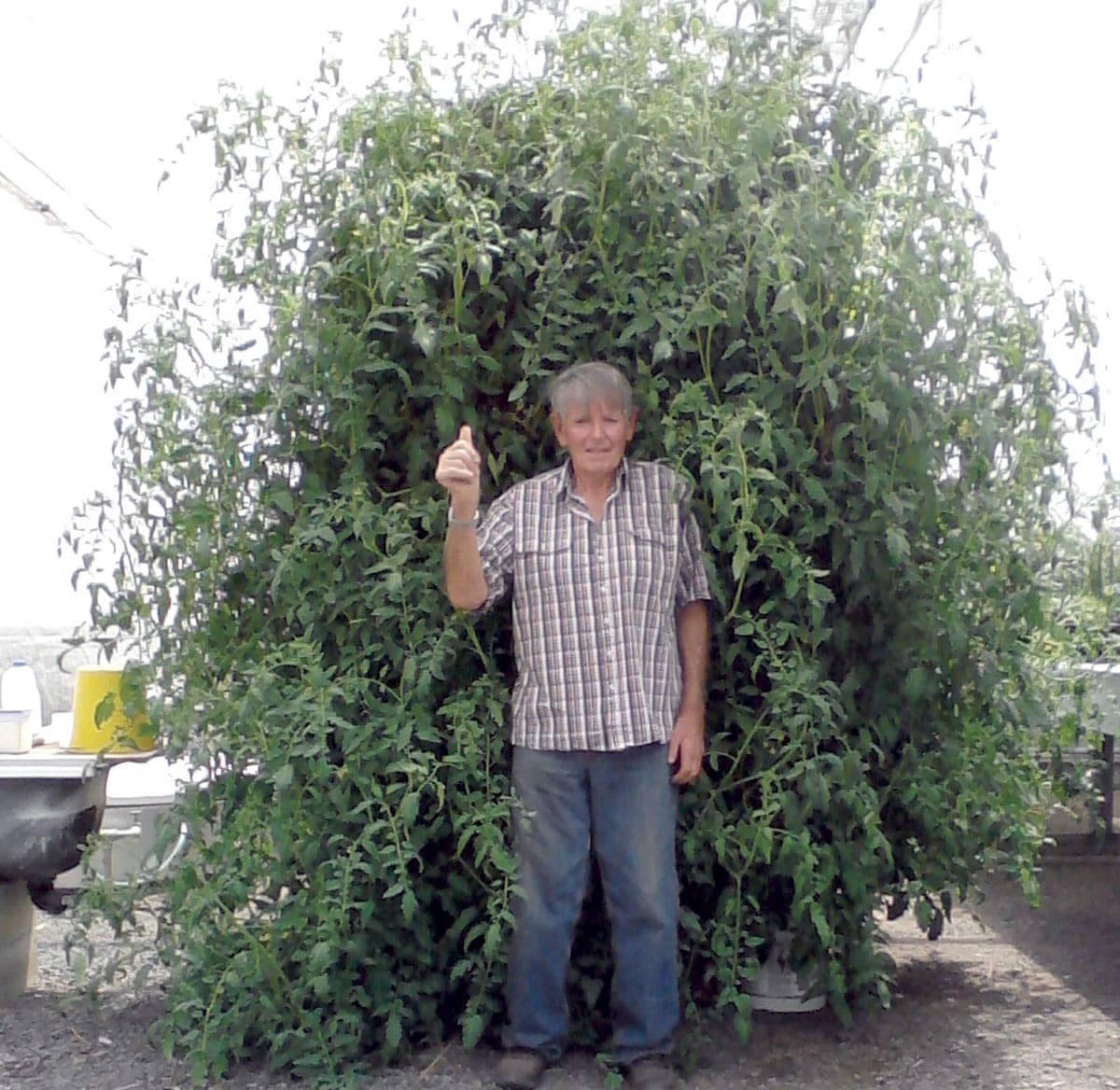Ben Stocks has grown a Tomato plant which would be the envy of every vegetable grower. He has used an age old technique which is proving popular and providing great yeilds on his property.
Ben Stocks is a man who likes to keep busy. Nearly everything he turns his hand to is a succes. The former builder, farmer and nursery owner has transformed a green house on the former Stock’s Native Nursery site in to a fully functional aquaponics operation. Aquaponics you ask? What is it? Aquaponics is a way to grow plants and fish for human consumption at the same time. It combines conventional aquaculture (raising aquatic animals such as snails, fish, crayfish or prawns in tanks) with hydroponics (cultivating plants in water) in a symbiotic environment.
In normal aquaculture, excretions from the animals being raised can accumulate in the water, increasing toxicity. In an aquaponic system, water from an aquaculture system is fed to a hydroponic system where the by-products are broken down by nitrifying bacteria initially into nitrites and subsequently into nitrates, which are utilized by the plants as nutrients. The water is then recirculated back to the aquaculture system.
Aquaponics has ancient roots, although there is some debate on its first occurrence: Aztec cultivated agricultural islands known as chinampas in a system considered by some to be the first form of aquaponics for agricultural use where plants were raised on stationary (and sometime movable) islands in lake shallows and waste materials dredged from the Chinampa canals and surrounding cities were used to manually irrigate the plants. South China, Thailand, and Indonesia who cultivated and farmed rice in paddy fields in combination with fish are cited as examples of early aquaponics systems. These polycultural farming systems existed in many Far Eastern countries and raised fish such as the oriental loach.
Ben has been growing vegetables and fish for over 12 months. He and wife Irene harvested up to 150 fish and then froze them to eat over an extended period. Whilst the fish grow so do the vegetables. Ben will be introducing some trout from Tumut to the sytem soon which will mean he won’t have to use electricity to heat the water as the fish will be able to live in the colder waters during winter. The waste from the fish provides the nutrients to the vegtables. He went on holidays and came back to find that the tomato tree had ‘taken over’. He has had to cut it back several times and try and train it, but there is no stopping the plant and the huge yields it delivers.
Ben said the tomato soup they have made is delicious. The whole sytem uses very little electricity and is very water conscious. The plants grow in the water amongst pebbles and there is no need to use soil as it slows the process down. This way the roots of the plant have instant access to the ‘food’ in the water. Ben said “It gives me something to get out of bed for, don’t retire with nothing to do. It is a good interest.” The tomatos Ben grows are very juicy and great tasting although he said the particular variety he grows is a softer type which he said may not be very good for freight puposes. One thing for sure is they are great in the Stock’s family kitchen.

